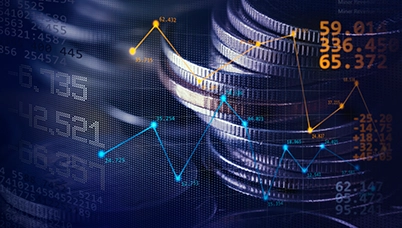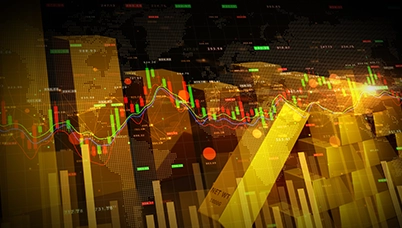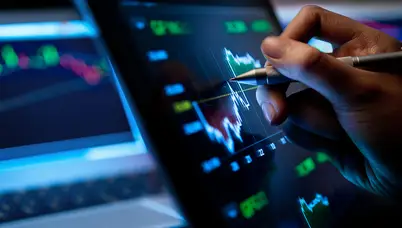Indians are buying less gold - could we be wrong?
Posted On Tuesday, Jul 28, 2009
Indians felt a sense of pride because many people of Indian origin – no matter that they fled India in the 1970’s and 1980’s because there were no economic opportunities in India - were CEOs of large Global companies like Pepsi (Indra Nooyi), Standard & Poor’s (Deven Sharma), Adobe systems (Shantanu Narayen), Citibank (Vikram Pandit), Cognizant Technology (Franciso D`Souza), and Hartford Financial Services (Ramani Ayer).
To add to our sense of global relevance, many Indian companies have bought well known international companies.
In 2007, Tata Steel bought Corus.
In 2007, Suzlon bought REPower (a wind power company in Germany)
In 2008, Tata Motors bought Jaguar and Land Rover.
In 2008, JSW Steel bought Saw Pipes USA Inc.
In hindsight, though, many of these events we felt proud about may actually be a source of embarrassment.
A Comparison

Source: Bloomberg
All the above acquisitions made by the Indian companies now look like a tremendous waste of money - and a questionable strategic decision.
Maybe the sellers in Canada, Germany, UK, and USA knew something we did not.
They were selling and they got the cash - not only that, but the sellers probably got a lot more than what those companies are worth today.
The Indian companies who were buying now look really dumb for having paid those ridiculous prices for those varied businesses.
Pause - and think about this.
Maybe Indians are not always right.
Maybe we are not the smartest people in the world.
Maybe someone else knows something more than we do.
Take the case of gold.
Gold is firmly embedded in Indian cultural and religious traditions.
It is a symbol of wealth and prosperity.
Gold is considered an auspicious metal.
Gold is also valued as a safe place to put your savings.
Indians have bought gold for centuries - we have always been the world’s largest consumer of gold, by volume.
And this consumption is not restricted to the smart "city-types".
In the rural areas, where close to 70% of India’s population lives, gold is viewed as a secure and easily accessible form of savings.
And, yet, after being large buyers of gold for decades, something has happened in the Indian psyche.
With gold hovering near record levels above of Rs. 14,000 per 10 grammes, Indians are not willing to buy more.
But the World Gold Council report indicates that the Americans, Canadians, Swiss - and the Chinese - are buying a lot more.
Sure, one could argue that those economies will feel the brunt of the fallout of the global economic and financial crises. Hence, the residents of those countries should be buying more gold.
The current financial crisis has strengthened the belief that gold is an effective preserver of capital and an asset to own under all circumstances.
Stock markets have tumbled globally; real estate has also collapsed.
But gold has kept inching higher - giving us the safety and comfort in times of crises and making money when nothing else made money.
Table: Gold`s performance in times of crisis
| (all in USD) | % Gain/Loss since July 31, 2007 (Bear Stearns funds in trouble) |
| India - BSE-30 TRI | -39.5% |
| Brazil - Bovespa | -25.2% |
| China - SHCOMP | -37.6% |
| Russia - RTSI$ | -57.90% |
| MSCI EM Free | -38.3% |
| S&P 500 | -37.4% |
| MSCI World | -39.90% |
| Berkshire Hathaway | -14.5% |
| Gold |  |
| Oil | -34.60% |
Gold is an internationally priced currency.
If the Americans, Canadians, Chinese, and the Swiss are all buying more - won’t its price increase?
Particularly, if no new major gold mine been discovered? Hence, there is no new supply of gold to meet this growing demand.
And if the price of gold increases won’t everyone in every part of the world who owns gold benefit from this price increase?
Don’t forget, the "foreigners" sold us their dud companies and our smart Indian companies paid some top prices for it.
Now the foreigners are buying gold - and we think we are smart by NOT buying gold any more?
Because gold has reached a peak price in India - of Rs 16,000 per 10 grammes?
What if gold was to surge to US Dollars 1,500 per troy ounce (about Rs 25,000 per 10 grammes at today’s US$ / INR currency exchange rate)?
Wouldn’t you look silly not having owned some?
Worse still, what if you had sold the gold you bought at Rs 11,000 per 10 grammes thinking that the peak price is Rs 16,000 per 10 grammes?
Step back - and think about it.
Shouldn’t you own 5% to 10% of your savings in gold?
Related Posts
-

Debt Monthly View for January 2025
Posted On Friday, Feb 07, 2025
Bond markets witnessed increased volatility during the last month with the 10-year Government
Read More -

Gold Monthly View for January 2025
Posted On Friday, Feb 07, 2025
In the calendar year 2024, gold demonstrated remarkable performance, yielding a return of ~ 27%.
Read More -

Equity Monthly View for February 2025
Posted On Thursday, Feb 06, 2025
Indian markets witnessed sharp sell-off in the month of January on the back of continued FII selling (USD -8.6Bn in January 25 vs USD -755Mn for CY2024).
Read More




